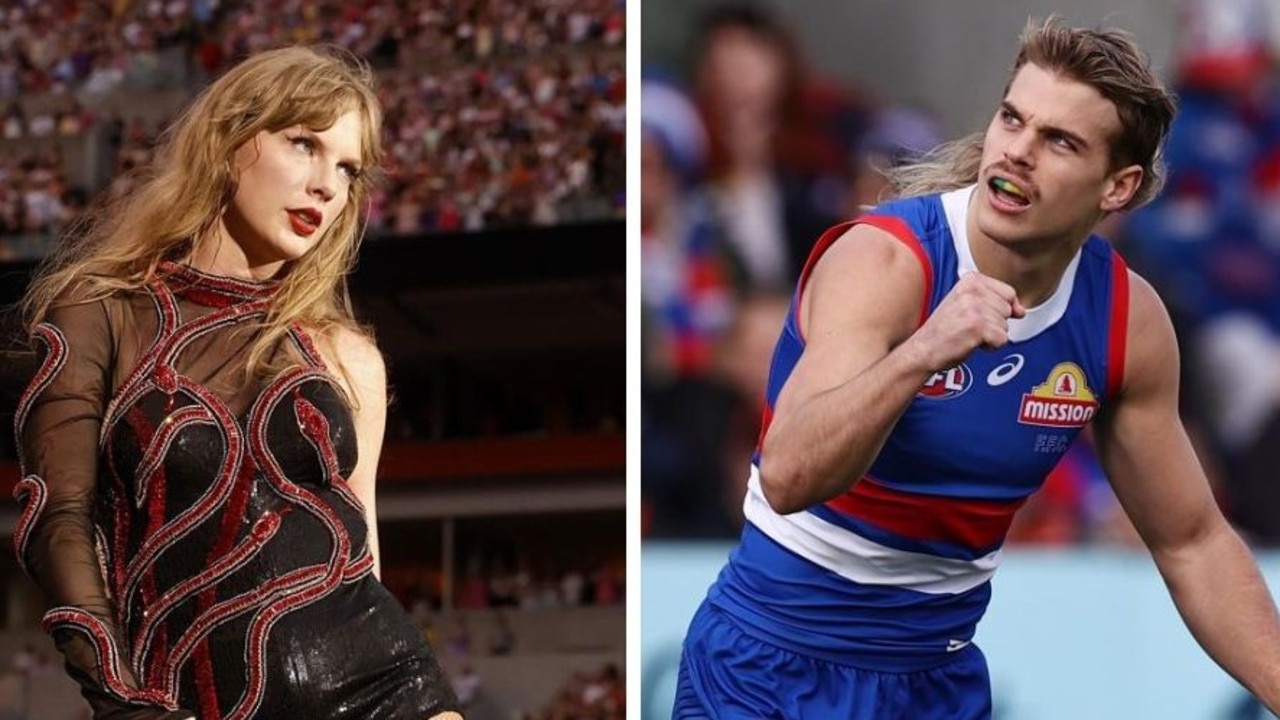The last few years have brought forth a glaring difference in my household.
While I can get on board with watching Collingwood win a Grand Final, you won’t catch me at most other AFL games.
And you certainly won’t see me re-watching the Grand Final two and-a-half times in the same weekend like some members of my family.
But on the flip side, they wouldn’t be caught dead waking up at 4am to line up for Taylor Swift’s record store day vinyl pressing.
However, with Swift’s rumoured romance with NFL tight end Travis Kelce, pop music and sport are being discussed in the same breath more than ever.
And when the two are put side-by-side, they don’t seem all that different.
While Swift fans camped outside Ticketek box offices for Eras Tour tickets earlier this year, AFL fans queued up outside the MCG days before the big game to secure the best seats.
Professor Sean Redmond from Deakin University also doesn’t believe there’s much of a disconnect between sport and pop music fans.
“Both achieve celebrity through skill or activity, they have ‘venues’ where they play, and they attract the same levels of fan devotion,” he told news.com.au.
In fact, the stardom, celebrity and fandom specialist explained that both fans of sport and pop music, like AFL and Swift, could even fall under the category of a fandom.
While the idea of AFL fans being part of a fandom may come as a shock to some, Professor Redmond broke down the meaning.
“The root is Latin and related to the idea of the fanatic or someone who is intensely connected to a cause,” he told news.com.au.
It might be an easy connection to make to Swifties, who are known for going all out for Swift.
Whether it be making friendship bracelets or donning lavish, intricate outfits, the Swifties have got it down pat.
But for sports like AFL, this might seem like an unusual link.
Professor Redmond explained that for sport fans, being part of a fandom can include simple things like the staple footy jerseys and hats fans wear to the games.
“We build fandoms around star players such as Bailey Smith,” he said.
“We build fandoms around our clubs – the footy jersey and the hat and flag becoming symbols of our fandom.
“We fill our bedroom and social media feeds with their images, merchandising, keepsakes.”
Kate Pattison, a PHD candidate at RMIT, is researching Swifties, and also pointed to a similarity between pop music and sport fans.
“At the end of the day they both buy merch, they both go to different shows, or different events, they find a community …
“I think at their core, whether you’re a sports fan or you’re a music fan, it can be such an enriching experience. And so I think instead of trying to put them against each other, it would just be nice if we could embrace both,” she finished.
Speaking more to how fandoms work, Professor Redmond explained that they have two (often interrelating forms) categorised as “individualised” and “public”.
Pinning posters to your wall, collecting memorabilia and imagining a one-on-one intimate connection with a star or celebrity falls under the individualised category.
So, think a signed jersey up on display or a signed Swift vinyl hanging up in a frame.
“Individualised may be a way for lonely or marginalised people to ‘connect’ with the social world,” Professor Redmond said.
On the other hand, fan communities like social media, fan blogs, chat rooms, and other online spaces can be attributed to public fandoms.
There are also two sites of connection, Professor Redmond explained.
“The formal, official or sanctioned, such as the official Facebook page of the star or celebrity in question, or their recorded live performances,” he explained.
The other is the “unofficial”, often characterised by gossip among fans or giving “counter ‘readings’ of what is happening in the world of the star or celebrity”.
He added that a good example of this could be how fans have been offering potential meanings for Olivia Rodrigo songs recently.
While the gap between Swift and AFL fans isn’t as large as people may think, Professor Redmond also pointed out that AFL is a national sport, while Swift is a global star.
“The level of her fandom is massive and therefore slightly more distant (or parasocial),” he said.

